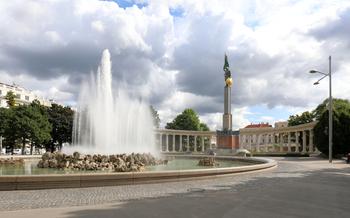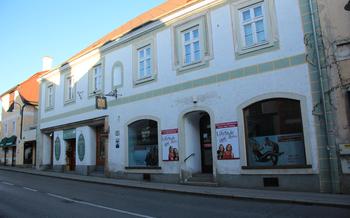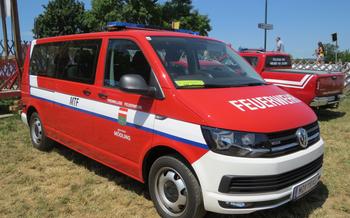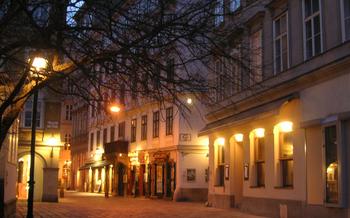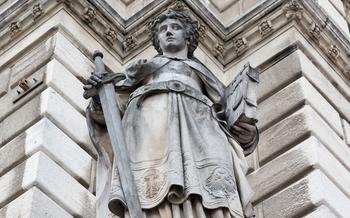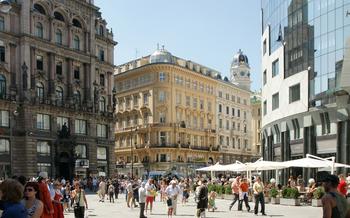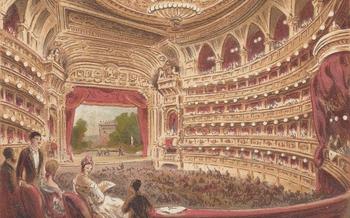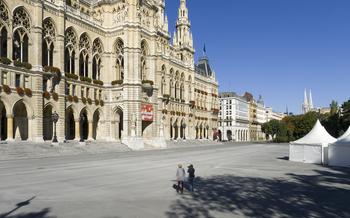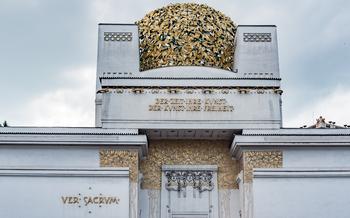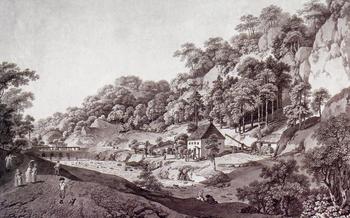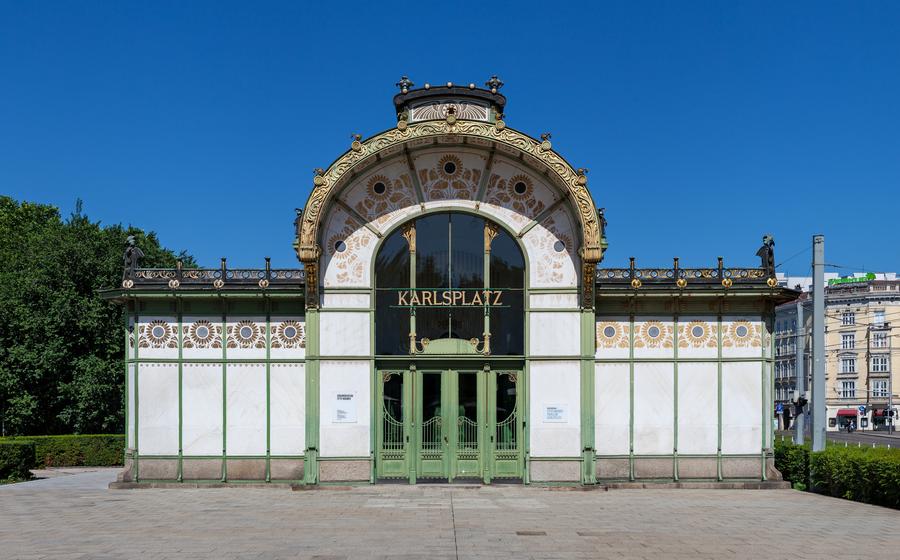
Otto Wagner Pavillon Karlsplatz
- The Otto Wagner Pavillon Karlsplatz: A Masterpiece of Art Nouveau Architecture
- Location and Accessibility
- Hours of Operation and Admission Fees
- Exhibitions and Displays Inside the Pavilion
- Otto Wagner's Legacy and Influence
- Exploring the Secessionist Movement in Vienna
- Immersive Art Experiences at the Pavilion
- History of the Karlsplatz Area
- Nearby Attractions and Activities
- Unveiling Otto Wagner's Architectural Vision
- Capturing the Essence of Vienna's Creative Spirit
- Practical Tips for Visitors
- Events and Programs at the Pavilion
- Otto Wagner's Impact on Viennese Identity
- Insider Tip: Discovering Hidden Gems Nearby
The Otto Wagner Pavillon Karlsplatz: A Masterpiece of Art Nouveau Architecture
Standing as a testament to the brilliance of Viennese architect Otto Wagner, the Otto Wagner Pavillon Karlsplatz is a captivating masterpiece of Art Nouveau architecture. Designed in 1898 as part of the Stadtbahn, Vienna's metropolitan railway, the pavilion served as a station entrance, showcasing Wagner's innovative approach to urban design. Its striking appearance and intricate details have earned it widespread recognition as a symbol of the Art Nouveau movement.
The pavilion's design is characterized by its fluid lines, organic motifs, and use of glass and metal. Wagner's mastery of these materials is evident in the graceful curves of the structure, the intricate metalwork that adorns the façade, and the delicate glass panels that let in natural light. The pavilion's ornamentation is inspired by nature, featuring floral patterns and stylized plant forms that evoke a sense of harmony between architecture and the environment.
The Otto Wagner Pavillon Karlsplatz stands as a testament to the architect's commitment to creating functional and aesthetically pleasing structures. Its innovative design and artistic significance have made it an icon of Art Nouveau architecture, attracting visitors from around the world who come to admire its beauty and learn about its historical importance.
Location and Accessibility
The Otto Wagner Pavillon Karlsplatz is conveniently positioned at Karlsplatz 1, making it easily accessible to visitors. It stands proudly at the intersection of four major streets: Opernring, Kärntner Straße, Argentinierstraße, and Lothringerstraße. This central location allows visitors to seamlessly integrate a visit to the pavilion with other sightseeing activities in the city center.
To reach the pavilion, visitors can utilize Vienna's comprehensive public transportation system. The Karlsplatz station, served by U1, U2, U4, and U6 subway lines, is just a short walk away. Additionally, several tram lines stop nearby, including lines 1, 2, 62, and 7For those arriving by car, limited parking is available in the surrounding streets or nearby parking garages.
Hours of Operation and Admission Fees
The Otto Wagner Pavillon Karlsplatz welcomes visitors Tuesday through Sunday from 10 am to 6 pm. It remains closed on Mondays and during public holidays. It's advisable to check the official website or contact the pavilion directly for any seasonal variations or special closures.
Regular admission fees are set at 8 euros for adults, while students, seniors, and groups of 10 or more can avail discounts by presenting valid identification. Guided tours are available at an additional cost and offer a deeper insight into Otto Wagner's life, work, and the significance of the pavilion.
The pavilion occasionally hosts special events, exhibitions, or installations that may require separate tickets or fees. Visitors are encouraged to check the event calendar or inquire at the information desk for details on upcoming programs and exhibitions. Special exhibitions often showcase contemporary art, design, and architecture, providing a platform for emerging artists and innovative concepts.
Exhibitions and Displays Inside the Pavilion
The Otto Wagner Pavillon Karlsplatz houses a variety of exhibitions and displays that showcase the life, work, and legacy of Otto Wagner, as well as contemporary art and design. The pavilion's permanent exhibits offer a comprehensive overview of Wagner's architectural achievements, with a focus on his pioneering role in the Art Nouveau movement. These exhibits feature original drawings, models, and photographs, providing visitors with insights into Wagner's creative process and his innovative approach to design.
In addition to the permanent exhibits, the pavilion regularly hosts temporary exhibitions that explore contemporary art, design, and architecture. These exhibitions showcase the work of emerging and established artists, designers, and architects, and offer visitors a glimpse into the latest trends and innovations in the creative fields. The pavilion also features interactive displays and multimedia presentations that enhance the visitor experience, providing a more engaging and immersive way to learn about Otto Wagner and his work.
Curated collections and special installations rotate throughout the year, offering visitors a constantly changing array of exhibitions to explore. These installations often feature unique perspectives on Wagner's work, highlighting his influence on contemporary art and design. The pavilion's commitment to showcasing a diverse range of exhibitions ensures that there is always something new and exciting to discover, making it a must-visit destination for art and architecture enthusiasts.
Otto Wagner's Legacy and Influence
Otto Wagner, born in 1841, was a visionary architect and a leading figure of the Art Nouveau movement. His contributions to architecture and urban planning in Vienna were immense, earning him recognition as one of the city's most influential architects. Wagner's innovative designs and use of new materials, such as glass and iron, transformed the cityscape and set new standards for modern architecture.
His most notable works include the Postal Savings Bank, the Kirche am Steinhof, and the Stadtbahn stations, which showcased his mastery of Art Nouveau aesthetics and functionality. Wagner's philosophy of Gesamtkunstwerk, which emphasized the integration of art and architecture, is evident in his designs, where every element, from the building's structure to its ornamentation, was meticulously considered.
Wagner's influence on Viennese architecture extended beyond his own projects. As a professor at the Academy of Fine Arts in Vienna, he mentored and inspired a generation of architects, including Josef Hoffmann, Joseph Maria Olbrich, and Koloman Moser, who would go on to shape the Viennese Secession movement. Wagner's legacy continues to inspire contemporary architects worldwide, solidifying his position as a pioneer of modern architecture.
Exploring the Secessionist Movement in Vienna
The Otto Wagner Pavillon Karlsplatz stands as a testament to the vibrant Secessionist movement that flourished in Vienna during the late 19th and early 20th centuries. This artistic and cultural movement, led by Gustav Klimt and other prominent artists, sought to break away from traditional academic styles and embrace new forms of expression.
The Secessionists aimed to create art that was both beautiful and meaningful, often incorporating elements of symbolism, allegory, and nature. They rejected the historical and classical influences that had dominated art for centuries and instead embraced modern ideas and techniques.
While Art Nouveau and the Secessionist movement share some similarities, such as their emphasis on organic forms and flowing lines, there are also some distinct differences. Art Nouveau is generally more international in scope, while the Secessionist movement was specifically rooted in Vienna and its unique cultural context.
To fully appreciate the impact of the Secessionist movement, visitors can explore other landmarks and buildings in Vienna that showcase this distinctive style. The Secession Building, designed by Joseph Maria Olbrich, is a prominent example and serves as the headquarters of the Vienna Secession. Other notable Secessionist buildings include the Majolikahaus, the Urania Observatory, and the Karlsplatz Stadtbahn Station, all of which contribute to the rich architectural heritage of Vienna.
Immersive Art Experiences at the Pavilion
The Otto Wagner Pavillon Karlsplatz is not just a showcase for Otto Wagner's architectural genius but also a platform for immersive and contemporary art experiences. Visitors can engage with unique installations and sensory exhibitions that push the boundaries of traditional art viewing.
Light, color, and technology come together to create interactive and immersive environments within the pavilion's spaces. Visitors can become part of the art itself, interacting with the installations and experiencing the transformative power of art.
Rotating installations showcase cutting-edge contemporary art, ensuring that the pavilion remains a vibrant and dynamic space for artistic expression. These immersive experiences offer visitors a glimpse into the future of art and its ability to transcend traditional boundaries.
From interactive projections that respond to movement to sound installations that envelop the senses, the Otto Wagner Pavillon Karlsplatz provides a truly immersive and unforgettable art experience for visitors of all ages.
History of the Karlsplatz Area
The Karlsplatz, where the Otto Wagner Pavillon stands, has a rich and storied history. In the Middle Ages, it was a busy market square known as the Neuer Markt. During the Baroque period, it underwent a transformation, with the construction of several magnificent palaces and churches. In the 19th century, the Karlsplatz became a hub of cultural activity, with the establishment of the Vienna Secession movement and the construction of the Musikverein concert hall.
In the 20th century, the Karlsplatz underwent significant changes. During World War II, it was heavily damaged by Allied bombs. After the war, it was reconstructed and redesigned as a pedestrian-friendly public space. Today, the Karlsplatz is a vibrant cultural hub, home to museums, galleries, and other cultural institutions. It is also a popular gathering place for locals and tourists alike, who come to enjoy the square's many attractions, including the Otto Wagner Pavillon.
Nearby Attractions and Activities
Beyond the Otto Wagner Pavillon, the Karlsplatz area offers a wealth of other cultural attractions and activities to complement your visit. Just a short stroll away, you'll find the Museum of Applied Arts (MAK), showcasing a diverse collection of decorative arts, furniture, and design objects from various eras. The Kunsthistorisches Museum and the Naturhistorisches Museum, located across the Ringstrasse, are must-sees for art and history enthusiasts, housing masterpieces from the Habsburg dynasty and an extensive collection of natural history specimens, respectively.
For those who enjoy shopping, the surrounding streets offer a mix of high-end boutiques, independent shops, and traditional Viennese cafes. Kärntner Straße, a prominent shopping street, is lined with international brands, while the narrow alleys of the Spittelberg district are home to charming boutiques and galleries. Take a break from your cultural exploration and indulge in Viennese culinary delights at one of the many cafes and restaurants in the area. From traditional Viennese coffee houses to international cuisine, there's something to satisfy every palate.
If you're looking for a green oasis amidst the urban landscape, the Stadtpark, located just behind the Musikverein, offers a tranquil retreat with its lush gardens, sculptures, and the iconic Kursalon concert hall. The Belvedere Palace, a short walk from the pavilion, boasts both an impressive art collection and beautifully landscaped gardens, providing a perfect spot for a leisurely stroll or a picnic.
Unveiling Otto Wagner's Architectural Vision
Otto Wagner's architectural vision, as exemplified in the Otto Wagner Pavillon Karlsplatz, is characterized by its innovative use of materials, structural integrity, and integration of art and architecture. Wagner's design principles emphasized functionality, elegance, and the creation of a harmonious relationship between the building and its surroundings.
The pavilion's structure is a testament to Wagner's engineering prowess. The use of iron and glass, cutting-edge materials for the time, allowed for a lightweight and airy construction that maximized natural light and created a sense of transparency. The intricate ornamentation, featuring floral motifs and geometric patterns, is not merely decorative but also serves a structural purpose, reinforcing the building's stability.
Wagner's philosophy of Gesamtkunstwerk, or the total work of art, is evident in the pavilion's seamless integration of architecture, art, and design. The building's exterior and interior spaces are adorned with sculptures, mosaics, and stained-glass windows, all designed by Wagner himself or in collaboration with other artists. This holistic approach creates a unified and immersive experience for visitors, allowing them to appreciate the pavilion as a complete work of art.
The Otto Wagner Pavillon Karlsplatz stands as a testament to Wagner's innovative spirit and his commitment to creating architecture that is both functional and aesthetically pleasing. It is a masterpiece of Art Nouveau architecture and a must-visit for anyone interested in the history of architecture and design.
Capturing the Essence of Vienna's Creative Spirit
The Otto Wagner Pavillon Karlsplatz stands as a testament to Vienna's rich cultural heritage, embodying the city's embrace of creativity and innovation. This architectural masterpiece is not merely a structure but a symbol of the Viennese spirit, a spirit that has flourished in the realms of music, literature, and design. The pavilion invites visitors to delve into the essence of this creative spirit, to appreciate the unique atmosphere that permeates the city.
Vienna has long been a haven for artists, thinkers, and innovators, leaving an indelible mark on the global cultural landscape. From the haunting melodies of Mozart and Schubert to the thought-provoking works of Freud and Wittgenstein, Vienna's creative genius has left an enduring legacy. The city's streets are lined with architectural wonders, from the grandiose palaces of the Habsburg era to the whimsical Art Nouveau creations that dot the cityscape.
The Otto Wagner Pavillon Karlsplatz is a microcosm of this creative spirit, a tangible expression of Vienna's artistic soul. Through its innovative design and exquisite craftsmanship, the pavilion showcases the city's commitment to pushing boundaries and embracing new ideas. Visitors to the pavilion are immersed in an environment that celebrates creativity in all its forms, leaving them with a profound appreciation for Vienna's unique cultural heritage.
Practical Tips for Visitors
Whether you're a seasoned traveler or a first-time visitor to Vienna, here are some practical tips to make the most of your visit to the Otto Wagner Pavillon Karlsplatz:
Recommended Time to Visit: To truly appreciate the pavilion's architectural details and immersive exhibitions, plan your visit during the daytime. The natural light enhances the interplay of colors and materials, allowing you to fully experience Wagner's vision.
Photography Enthusiasts: For photography enthusiasts, the Otto Wagner Pavillon offers a wealth of opportunities to capture stunning shots. The intricate ornamentation, vibrant colors, and unique angles provide endless possibilities for creative photography.
Accessibility Features: The pavilion is wheelchair accessible, ensuring that visitors with disabilities can comfortably explore the exhibitions. Accessible restrooms are also available on-site.
Culinary Delights Nearby: After immersing yourself in the world of Otto Wagner, satisfy your taste buds with a delicious meal at one of the nearby restaurants or cafes. From traditional Viennese cuisine to international flavors, there are options to suit every palate.
Events and Programs at the Pavilion
The Otto Wagner Pavillon Karlsplatz is not just a static museum but a vibrant hub for cultural events, workshops, and lectures throughout the year. These events provide an opportunity for visitors to engage with the creative community, learn from experts, and experience the pavilion in new and exciting ways.
Regular events include guided tours that delve deeper into the history, architecture, and significance of the pavilion. Workshops and lectures often focus on contemporary art, design, and architecture, with renowned artists and experts sharing their insights and perspectives. Special exhibitions and installations showcase emerging artists and innovative concepts, offering visitors a glimpse into the cutting-edge of contemporary art.
To stay updated on upcoming events and programs, visitors can check the pavilion's website or social media pages. By participating in these events, visitors can gain a deeper understanding of Otto Wagner's legacy, explore new artistic perspectives, and connect with the vibrant creative community in Vienna.
Otto Wagner's Impact on Viennese Identity
The Otto Wagner Pavillon Karlsplatz stands as a testament to the profound impact Otto Wagner had on the cultural identity of Vienna. His innovative designs and commitment to artistic excellence helped shape the city's unique character and reputation as a hub of creativity and innovation. Wagner's influence extended beyond architecture, leaving a lasting legacy in urban planning and the development of Viennese identity.
Wagner's contributions to Vienna's architectural landscape are undeniable. His buildings, such as the Majolikahaus and the Postal Savings Bank, are iconic landmarks that continue to inspire and captivate visitors. Wagner's vision of a Gesamtkunstwerk, where art and architecture seamlessly blend, is evident in his meticulous attention to detail and the integration of decorative elements into his designs.
Wagner's impact on Viennese identity is not limited to his architectural masterpieces. As a professor at the Academy of Fine Arts Vienna, he nurtured a generation of architects and designers who carried his legacy forward. His teachings and principles laid the foundation for the development of a distinct Viennese style that embraced modernity while respecting tradition.
Wagner's influence extends beyond the realm of architecture. He was a prominent figure in the Vienna Secession movement, a group of artists and architects who sought to break away from traditional academic styles and embrace new forms of artistic expression. Wagner's involvement in the Secession helped to shape the city's cultural landscape and contributed to its reputation as a center of artistic innovation.
Today, Vienna is recognized as a UNESCO City of Design, a testament to its commitment to preserving and promoting its rich architectural heritage. The Otto Wagner Pavillon Karlsplatz remains a symbol of Wagner's profound impact on the city's identity and serves as a reminder of the enduring legacy of his artistic vision.
Insider Tip: Discovering Hidden Gems Nearby
As you wander around the Karlsplatz area, keep an eye out for hidden gems that offer a glimpse into Vienna's rich cultural tapestry. Just a short walk from the Otto Wagner Pavillon, you'll find the Naschmarkt, a vibrant market with over 120 stalls selling everything from fresh produce to traditional Austrian delicacies. Take your time to explore the market's culinary delights and soak up the lively atmosphere.
Another hidden gem in the neighborhood is the Theater Drachengasse, a charming little theater that stages contemporary and experimental plays. If you're looking for a unique cultural experience, check out their program and catch a performance.
For those who love to explore off the beaten path, I recommend venturing into the nearby Spittelberg quarter. This charming district is home to narrow cobblestone streets, quaint courtyards, and hidden passageways. Take your time to wander around and discover the unique shops, galleries, and cafes that line the streets.
To truly blend in with the locals, be sure to visit one of the many traditional Viennese coffee houses in the area. These iconic establishments are a beloved part of Viennese culture and offer a great place to relax with a cup of coffee and a slice of cake.
Remember, part of the joy of exploring Vienna is discovering its hidden gems. So, take your time, wander around the neighborhood, and uncover the secrets that this vibrant city has to offer.
